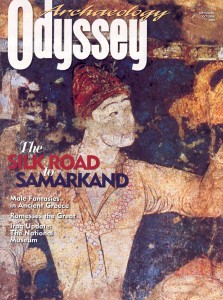In the July/August 2003 issue of Archaeology Odyssey (see “Plundering the Past”), I reported on the terrible events that took place during the second week of April at the National Museum and other cultural heritage sites in Baghdad.
Fortunately, my suspicion that early assessments of the losses were exaggerated has proved correct. Unfortunately, a number of commentators have now proceeded to go overboard in the other direction, claiming that reports of looting were unfounded rumors.
First, some good news. The National Museum in Baghdad possesses an important collection of the earliest examples of proto-cuneiform writing (c. 3200 B.C.), excavated in Uruk (the modern Iraqi site of Warka). These pieces and about 100,000 other cuneiform tablets (dating up to the first century A.D.) were kept safely in a storage room that was not breached. This group includes the invaluable Sippar archive of about 800 clay tablets from the Neo-Babylonian period (625–539 B.C.). Cuneiform scholars—a.k.a. Assyriologists—can breathe a collective sigh of relief.
Furthermore, almost all artifacts (about 8,000 pieces) in the public galleries of the National Museum were removed by the museum staff to a secure location before the war began. They were recovered unharmed. According to Donny George, director of research for the Iraq Department of Antiquities, and Nawala el-Mutawalli, director of the National Museum, museum workers and archaeologists became highly efficient at the delicate task of hiding objects during the 1980–1988 Iran-Iraq War and the 1991 Gulf War. The exact location of this hiding place has not been officially revealed, but it is likely on the museum’s grounds.
Already a library member? Log in here.
Institution user? Log in with your IP address.

